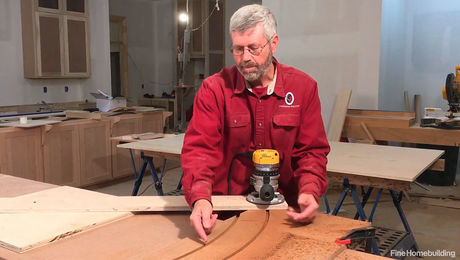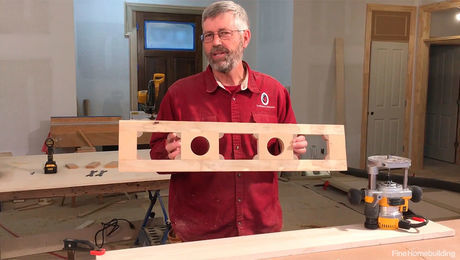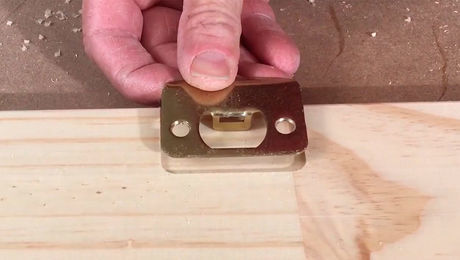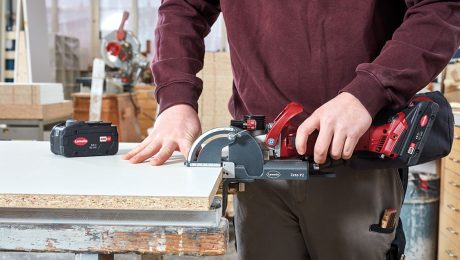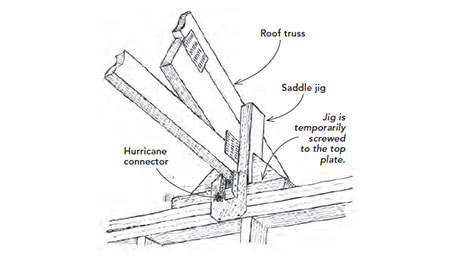Pocket-Hole Jigs
Porter-Cable enters a category that has long been dominated by Kreg, but is their new jig an improvement?
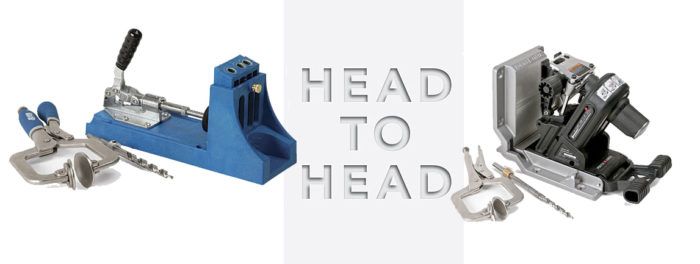
Synopsis: For years, Kreg has dominated the pocket-jig product category. It recently got some competition from Porter-Cable, however, prompting senior editor Justin Fink to look at both models head to head. The Kreg jig has few moving parts, so repairs are generally easy. Its small size and slim case make it convenient to move from job to job or to store away between uses. The Porter-Cable jig makes several significant improvements over the Kreg, including a streamlined clamping mechanism and thickness adjustment. It is a much larger tool than the Kreg and does not come with a case, plus it has a greater number of moving parts, which puts it at a greater risk for failure over time.
The matter of mobility
Although these tools aren’t particularly large or heavy, their design influences their portability. Some pocket-hole enthusiasts have a jig set up in the shop, and some throw the tool in the truck to use on the job site. Your work style should influence your choice.
The Porter-Cable jig has a larger footprint than the Kreg jig, and it doesn’t break down into smaller pieces for transport. Although it has a slot for storing square-drive bits, it has no carrying case, so the drill-bit, clamp, and screw storage is up to you. The Kreg jig is about half the size of the Porter-Cable model and comes with a carrying case, though it’s not especially roomy or sturdy.
Thickness adjustment: 1 step vs. 4
Because a pocket hole is oriented at an angle, the depth of the hole needs to be adjusted to match the thickness of the wood. The thicker the stock, the deeper the bit needs to bore into the wood. To adapt to different thicknesses, the guide block on the Kreg jig slides up and down, and is secured with a setscrew. On the Porter-Cable model, there is no depth adjustment to worry about. The collar on the drill bit pushes down on a metal plate, and the plate stops automatically based on the wood’s thickness.
Here’s the catch: The Porter-Cable setup uses a longer drill bit — 9 in., compared to Kreg’s 6-in. bit. Because of that and because the metal guide plate is higher and farther back than on the Kreg model, it’s cumbersome to pull out and reposition the drill bit after boring each hole. The gap between the metal guide plate and the drill guide holes below also requires more fuss and increases the chance of accidentally dulling the drill bit due to misalignment.
Two-part clamp makes for smooth production work
When you’re moving a lot of pieces through the same jig, anything that speeds the process is a blessing. The Porter-Cable jig has a two-part system. First, a front lever is pulled down. Next, a rotating clamp lever is pushed down and twisted to lock the stock into position. For subsequent pieces of the same thickness, you can quickly clamp and release the stock using the front lever.
Although the previous generation Kreg K3 model had the clamp lever in the front as well, more recent K4 models have the clamp at the rear of the jig to make room at the front for dust collection and for the whole apparatus to be clamped to the worktable. At best, this rear position on the K4 system is simply not as convenient to operate. At worst, when boring through stock that is wide or tall, the clamp is awkward to reach, and pulling the lever toward your body to secure the stock is more difficult than pushing it down, like on the Porter-Cable.
For more photos and details, click the View PDF button below:










